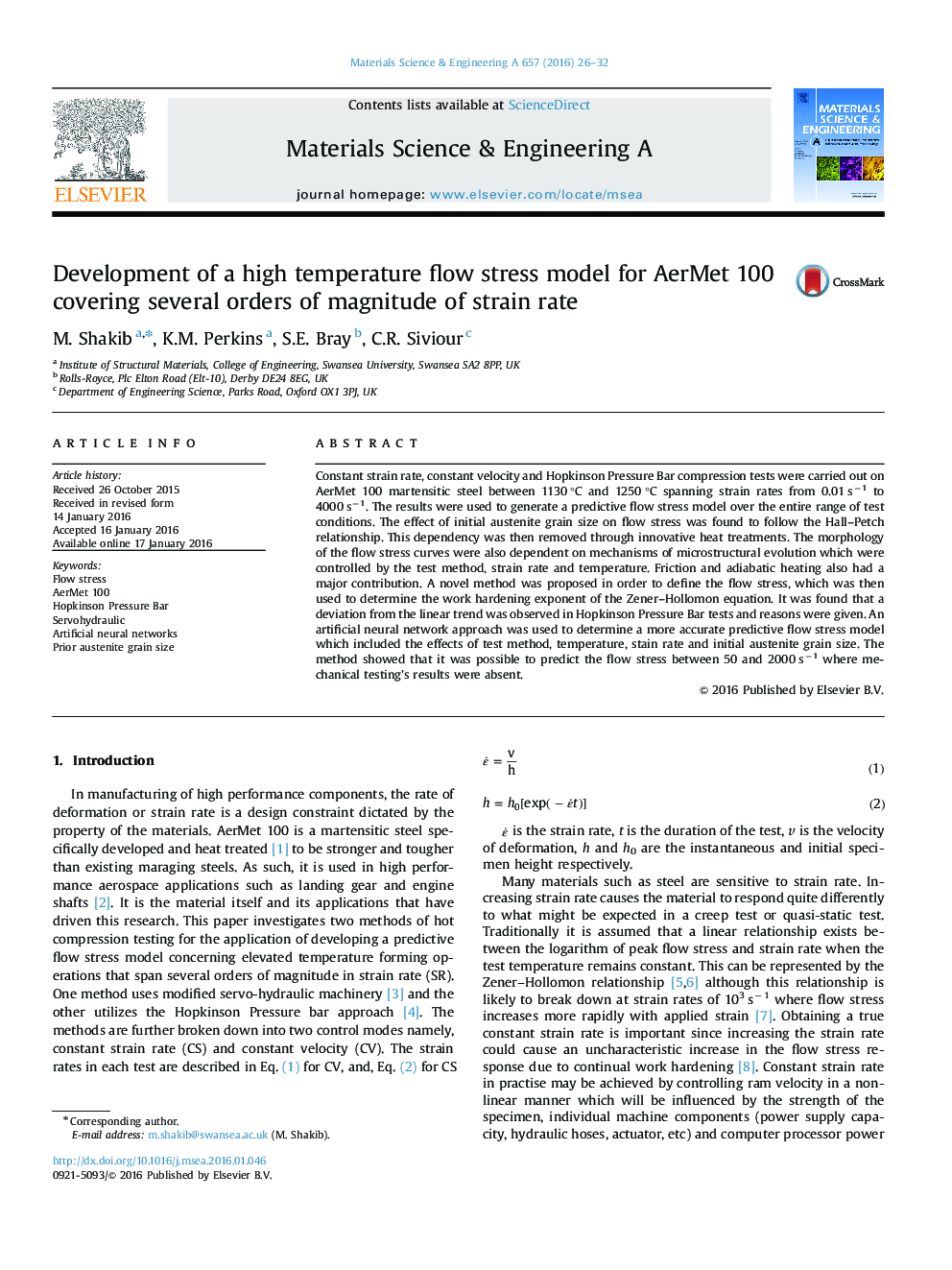| Article ID | Journal | Published Year | Pages | File Type |
|---|---|---|---|---|
| 1573726 | Materials Science and Engineering: A | 2016 | 7 Pages |
Abstract
Constant strain rate, constant velocity and Hopkinson Pressure Bar compression tests were carried out on AerMet 100 martensitic steel between 1130 °C and 1250 °C spanning strain rates from 0.01 sâ1 to 4000 sâ1. The results were used to generate a predictive flow stress model over the entire range of test conditions. The effect of initial austenite grain size on flow stress was found to follow the Hall-Petch relationship. This dependency was then removed through innovative heat treatments. The morphology of the flow stress curves were also dependent on mechanisms of microstructural evolution which were controlled by the test method, strain rate and temperature. Friction and adiabatic heating also had a major contribution. A novel method was proposed in order to define the flow stress, which was then used to determine the work hardening exponent of the Zener-Hollomon equation. It was found that a deviation from the linear trend was observed in Hopkinson Pressure Bar tests and reasons were given. An artificial neural network approach was used to determine a more accurate predictive flow stress model which included the effects of test method, temperature, stain rate and initial austenite grain size. The method showed that it was possible to predict the flow stress between 50 and 2000 sâ1 where mechanical testing's results were absent.
Related Topics
Physical Sciences and Engineering
Materials Science
Materials Science (General)
Authors
M. Shakib, K.M. Perkins, S.E. Bray, C.R. Siviour,
